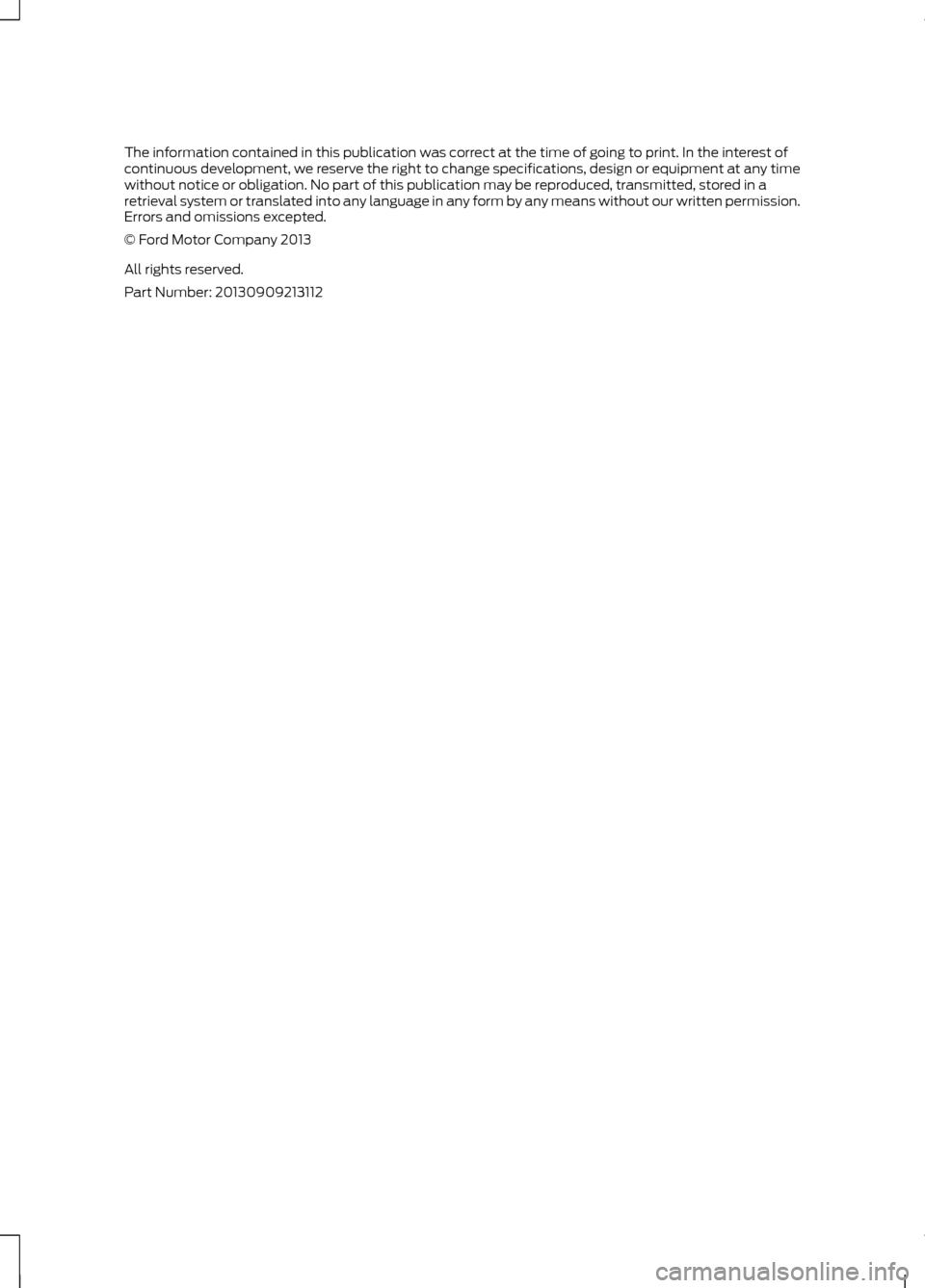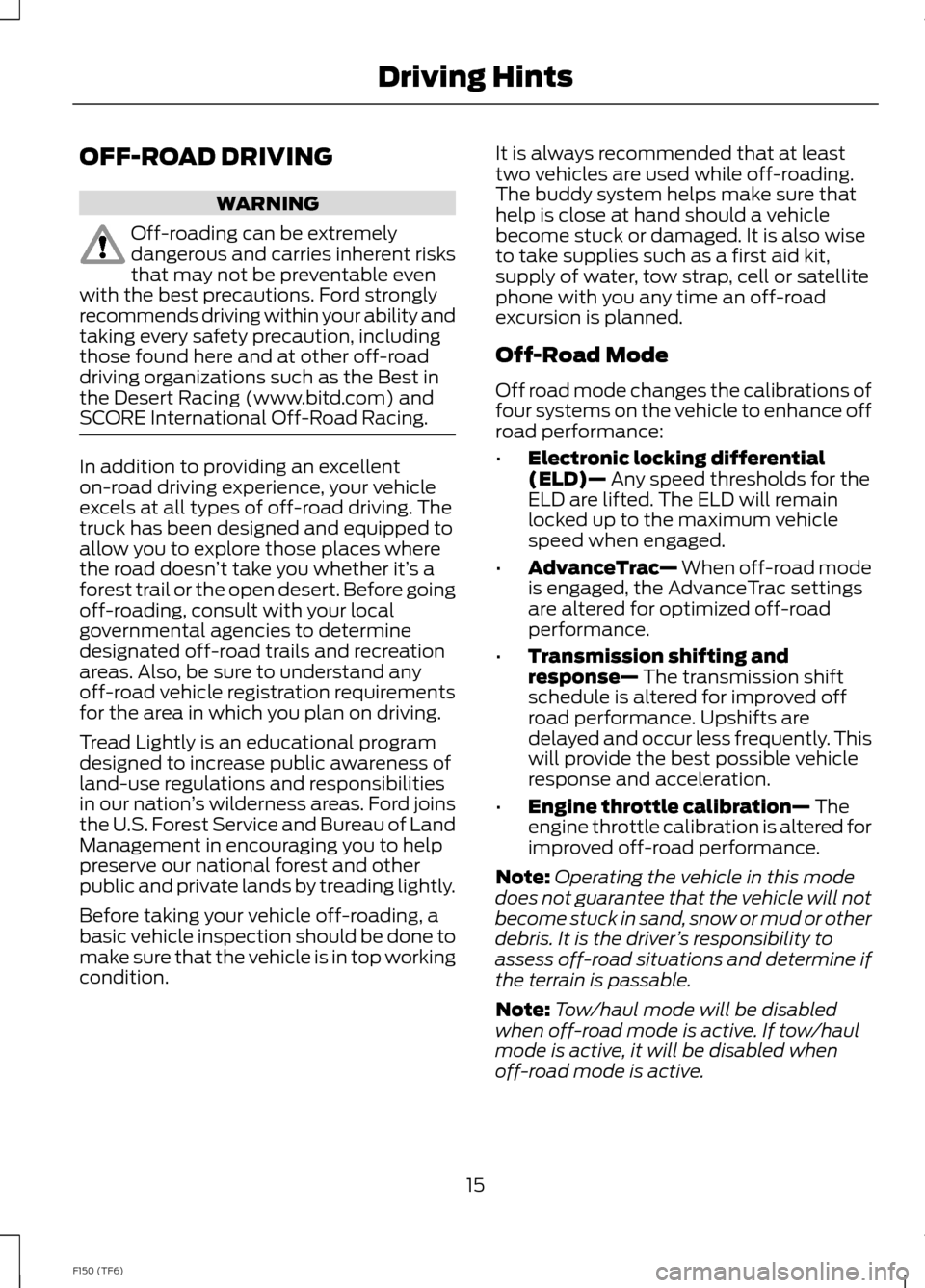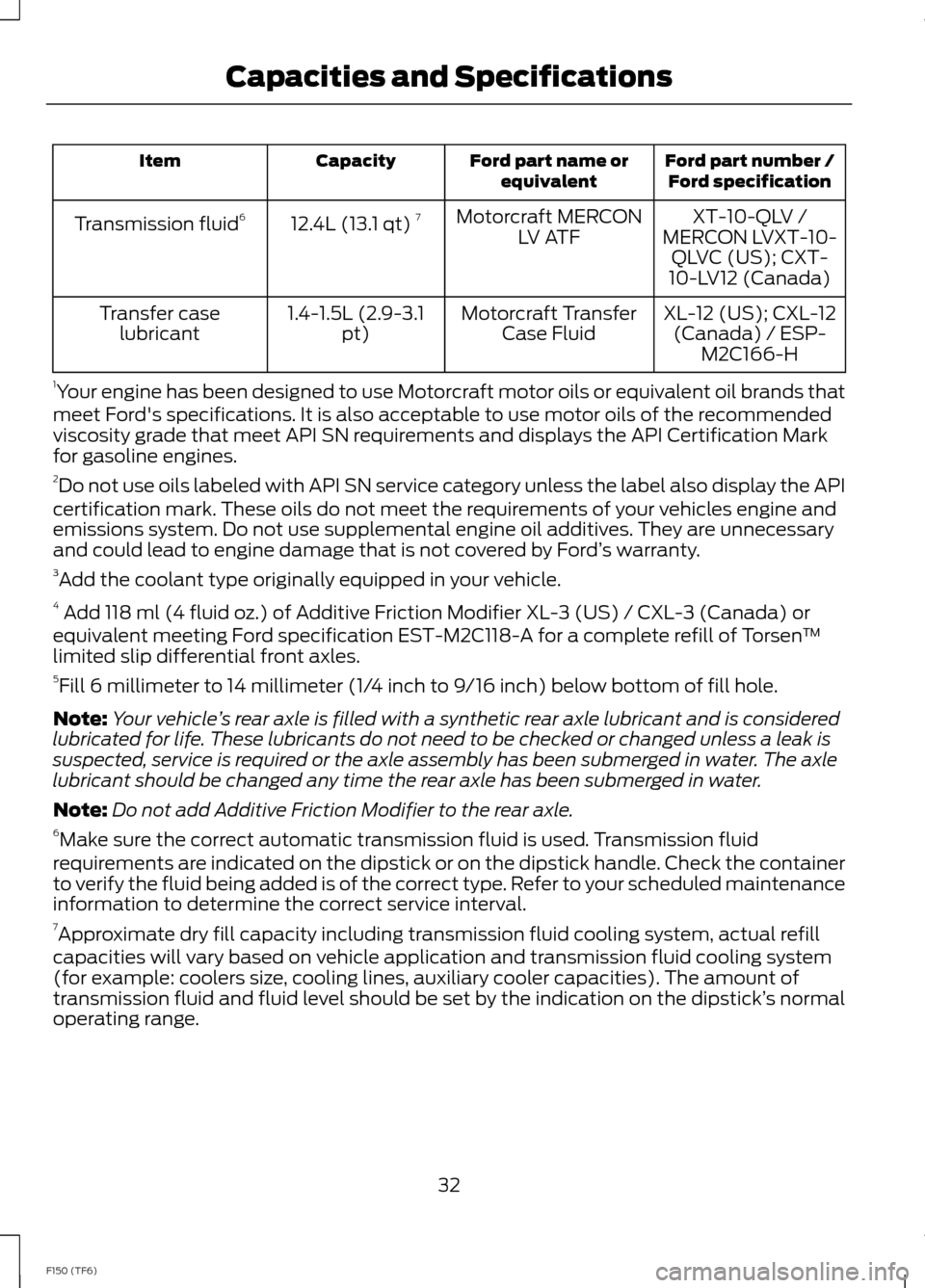2014 FORD F150 change time
[x] Cancel search: change timePage 2 of 41

The information contained in this publication was correct at the time of going to print. In the interest ofcontinuous development, we reserve the right to change specifications, design or equipment at any timewithout notice or obligation. No part of this publication may be reproduced, transmitted, stored in aretrieval system or translated into any language in any form by any means without our written permission.Errors and omissions excepted.© Ford Motor Company 2013
All rights reserved.Part Number: 20130909213112
Page 17 of 41

OFF-ROAD DRIVING
WARNING
Off-roading can be extremelydangerous and carries inherent risksthat may not be preventable evenwith the best precautions. Ford stronglyrecommends driving within your ability andtaking every safety precaution, includingthose found here and at other off-roaddriving organizations such as the Best inthe Desert Racing (www.bitd.com) andSCORE International Off-Road Racing.
In addition to providing an excellenton-road driving experience, your vehicleexcels at all types of off-road driving. Thetruck has been designed and equipped toallow you to explore those places wherethe road doesn’t take you whether it’s aforest trail or the open desert. Before goingoff-roading, consult with your localgovernmental agencies to determinedesignated off-road trails and recreationareas. Also, be sure to understand anyoff-road vehicle registration requirementsfor the area in which you plan on driving.
Tread Lightly is an educational programdesigned to increase public awareness ofland-use regulations and responsibilitiesin our nation’s wilderness areas. Ford joinsthe U.S. Forest Service and Bureau of LandManagement in encouraging you to helppreserve our national forest and otherpublic and private lands by treading lightly.
Before taking your vehicle off-roading, abasic vehicle inspection should be done tomake sure that the vehicle is in top workingcondition.
It is always recommended that at leasttwo vehicles are used while off-roading.The buddy system helps make sure thathelp is close at hand should a vehiclebecome stuck or damaged. It is also wiseto take supplies such as a first aid kit,supply of water, tow strap, cell or satellitephone with you any time an off-roadexcursion is planned.
Off-Road Mode
Off road mode changes the calibrations offour systems on the vehicle to enhance offroad performance:
•Electronic locking differential(ELD)— Any speed thresholds for theELD are lifted. The ELD will remainlocked up to the maximum vehiclespeed when engaged.
•AdvanceTrac— When off-road modeis engaged, the AdvanceTrac settingsare altered for optimized off-roadperformance.
•Transmission shifting andresponse— The transmission shiftschedule is altered for improved offroad performance. Upshifts aredelayed and occur less frequently. Thiswill provide the best possible vehicleresponse and acceleration.
•Engine throttle calibration— Theengine throttle calibration is altered forimproved off-road performance.
Note:Operating the vehicle in this modedoes not guarantee that the vehicle will notbecome stuck in sand, snow or mud or otherdebris. It is the driver’s responsibility toassess off-road situations and determine ifthe terrain is passable.
Note:Tow/haul mode will be disabledwhen off-road mode is active. If tow/haulmode is active, it will be disabled whenoff-road mode is active.
15F150 (TF6)Driving Hints
Page 21 of 41

Off-road Screen
The real-time status of your vehiclesoff-road systems can be continuouslymonitored using the first off-road screenfound under the Truck Apps menu in theinformation displays screen. See theInformation Displays chapter of yourOwner’s Manual for more information.
Basic Off-road Driving Techniques
•
•Grip the steering wheel with thumbson the outside of the rim. This willreduce the risk of injury due to abruptsteering wheel motions that occurwhen negotiating rough terrain. Do notgrip the steering wheel with thumbsinside the rim.
•Throttle, brake and steering inputsshould be made in a smooth andcontrolled manner. Sudden inputs tothe controls can cause loss of tractionor upset the vehicle, especially whileon sloped terrain or while crossingobstacles such as rocks or logs.
•Look ahead on your route notingupcoming obstacles, surface textureor color changes or any other factorswhich may indicate a change inavailable traction, and adjust thevehicle speed and route accordingly.During pre-run, mark obstacles withGPS markers to make sure appropriatespeeds are used to avoid potentialvehicle damage.
•When driving off-road, if the front orrear suspension is bottoming-outand/or excessive contact with theskid-plates is encountered, reducevehicle speed to avoid potentialdamage to the vehicle.
•When running with other vehicles, it isrecommended that communication isused, and the lead vehicle notify othervehicles of obstacles that could causepotential vehicle damage.
•Always keep available groundclearance in mind and pick a route thatminimizes the risk of catching theunderside of the vehicle on an obstacle.
•When negotiating low speed obstacles,applying light brake pressure inconjunction with the throttle will helpprevent the vehicle from jerking andwill allow you to negotiate the obstaclein a more controlled manner. Using 4Lwill also help with this.
•Use and equip supplemental safetyequipment as discussed later in thischapter.
•Please consult your local off-roadgroup for other helpful tips.
•Off-roading requires a high degree ofconcentration. Even if your local lawdoes not prohibit alcohol use whiledriving off-road, Ford stronglyrecommends against drinking if youplan to off-road.
Operating a Performance Vehicleat Higher than Normal Speeds
Your vehicle is capable of operating athigher than normal off-road speeds and isequipped with tires rated for the vehicles’maximum speed. However, it is importantto remember to always drive safely, obeyall traffic laws and only operate yourvehicle at higher than normal speeds atlocations and under conditions where suchcan be done safely.
19F150 (TF6)Driving Hints
Page 34 of 41

Ford part number /Ford specificationFord part name orequivalentCapacityItem
XT-10-QLV /MERCON LVXT-10-QLVC (US); CXT-10-LV12 (Canada)
Motorcraft MERCONLV ATF12.4L (13.1 qt) 7Transmission fluid6
XL-12 (US); CXL-12(Canada) / ESP-M2C166-H
Motorcraft TransferCase Fluid1.4-1.5L (2.9-3.1pt)Transfer caselubricant
1Your engine has been designed to use Motorcraft motor oils or equivalent oil brands thatmeet Ford's specifications. It is also acceptable to use motor oils of the recommendedviscosity grade that meet API SN requirements and displays the API Certification Markfor gasoline engines.2Do not use oils labeled with API SN service category unless the label also display the APIcertification mark. These oils do not meet the requirements of your vehicles engine andemissions system. Do not use supplemental engine oil additives. They are unnecessaryand could lead to engine damage that is not covered by Ford’s warranty.3Add the coolant type originally equipped in your vehicle.4 Add 118 ml (4 fluid oz.) of Additive Friction Modifier XL-3 (US) / CXL-3 (Canada) orequivalent meeting Ford specification EST-M2C118-A for a complete refill of Torsen™limited slip differential front axles.5Fill 6 millimeter to 14 millimeter (1/4 inch to 9/16 inch) below bottom of fill hole.
Note:Your vehicle’s rear axle is filled with a synthetic rear axle lubricant and is consideredlubricated for life. These lubricants do not need to be checked or changed unless a leak issuspected, service is required or the axle assembly has been submerged in water. The axlelubricant should be changed any time the rear axle has been submerged in water.
Note:Do not add Additive Friction Modifier to the rear axle.6Make sure the correct automatic transmission fluid is used. Transmission fluidrequirements are indicated on the dipstick or on the dipstick handle. Check the containerto verify the fluid being added is of the correct type. Refer to your scheduled maintenanceinformation to determine the correct service interval.7Approximate dry fill capacity including transmission fluid cooling system, actual refillcapacities will vary based on vehicle application and transmission fluid cooling system(for example: coolers size, cooling lines, auxiliary cooler capacities). The amount oftransmission fluid and fluid level should be set by the indication on the dipstick’s normaloperating range.
32F150 (TF6)Capacities and Specifications